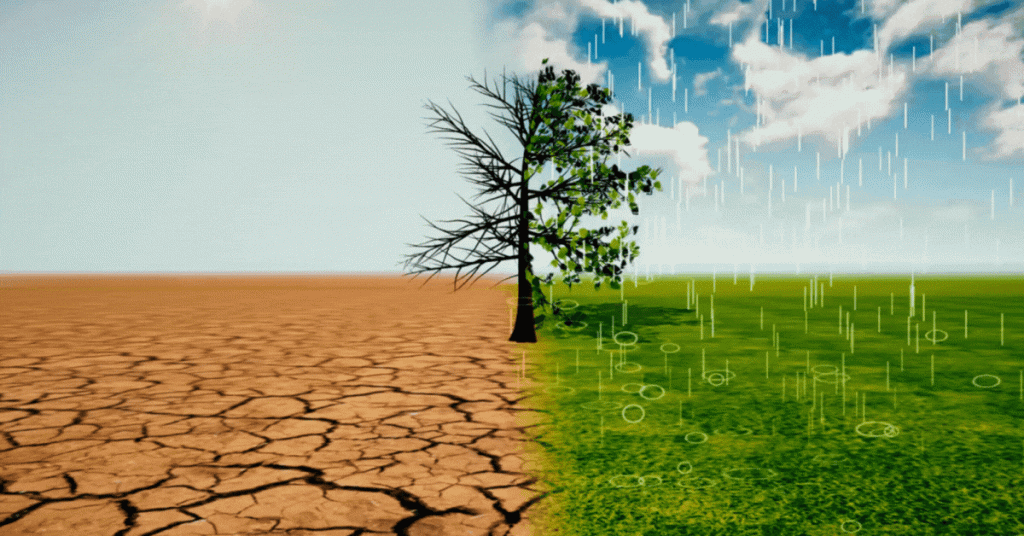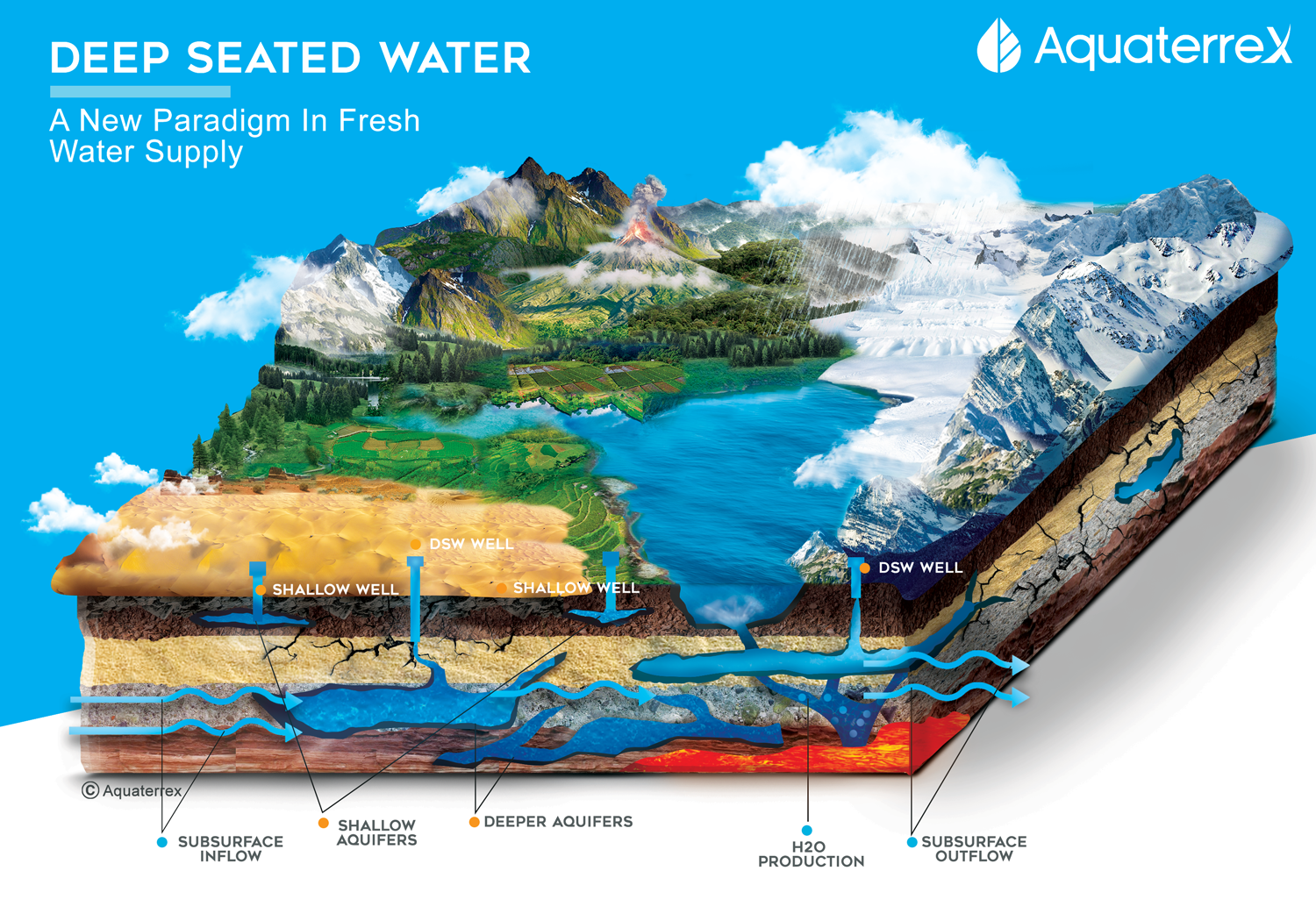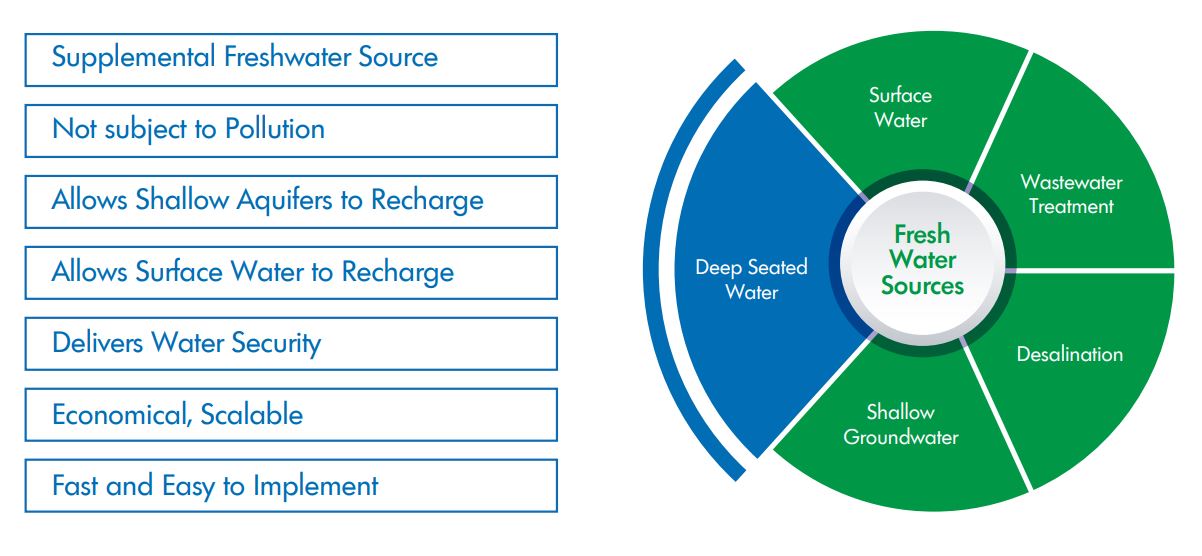
It’s Time to Stop Being the Effect of Drought and Start Being At Cause
Atmospheric Rivers drench parched landscapes with rain and snow. Historic drought causes ranchers to sell their cattle and farmers to let their fields lie fallow. Towns halt expansion due to lack of water. The history of water management is more a story of being at the effect of Mother Nature rather than being at “Cause” over it. That is, it’s mostly the story of praying for rain or praying for the end of it.
Certainly, there have been planning success stories and new technologies introduced to help manage the supply of water for agriculture, industry, and humanity. However, all too often at the farm or ranch level or the city or town level, people are more likely to be the effect of these meteorological swings than at cause over them. And sometimes, as in the American Southwest, the effect impacts tens of millions of people threatened by lack of water. Plus, the ripple effect of lower and more costly food supplies can affect billions of people worldwide.
Improved Planning and More Options Needed
It’s time to increase the number of options available to solve this problem. From water-smart appliances and agricultural tools at the delivery end, to utilizing the vast ocean of fresh water that exists right below our feet for additional supply.
But it won’t happen without cooperation. Last week a deadline was missed on an agreement between the seven states that draw water from the Colorado River basin. They had to come up with a plan to voluntarily cut back on using water from the basin. Six states — Arizona, Colorado, Nevada, New Mexico, Utah and Wyoming — agreed on one proposal. But California, which is the state that uses the most water, rejected that plan and submitted its own. Colorado River deadline missed.
One of the most intriguing solutions is to include the vast supplemental source of fresh water that is available right below our feet. The US National Groundwater Association estimates there are 6,000 years of global water supply in the upper two kilometers of the earth’s crust. It is now available economically and quickly through AquaterreX’s combination of space-based technology, geospatial data, and patented instrumentation. We are proud to be helping solve the water crisis facing billions of people.
Deep Seated Water Should Be Added to the Mix Now
Deep Seated Water (DSW), is groundwater, typically sourced from deep aquifers that are located lower than shallow aquifers. Such deep aquifers are supplied not only from local catchment basins but also by subsurface inflows across basin boundaries. Deep Seated Water also encompasses water created at the mantle level of the Earth under extreme heat and pressure as confirmed by this report on mantle rain. Contamination does not occur in these deep water aquifers as modern pollution has not reached these deeper levels. And the best news is that this water is accessible and plentiful.
Deep Seated Water enables you to be self-sustaining.
Deep Seated Water fits the environmental sustainability model as it would supply vast amounts of fresh water to regions while also allowing the existing sources to replenish. It is the “Missing Piece” that can solve the water crisis puzzle and help put farmers, ranchers, and cities at “cause” versus hoping for mother nature to bail us out with enough rain. The good news is, Deep Seated Water is a source that can supply the needs of the planet for thousands of years.
An example of huge new sources of fresh groundwater being discovered came within the last year in Texas. The newly named Maverick Basin Aquifer is known to be at least 3,000 square miles and averages 1,000 feet thick in most places. This comes years after Texas water experts concluded their deeper aquifers are brackish (salty) at best. Water tests on this new aquifer show it comes out of the ground already meeting or exceeding federal and state drinking water standards! Deep aquifer (texas.gov) These discoveries fly in the face of the commonly accepted beliefs of most hydrogeology professionals.
We Can be at “Cause” Over the Water Crisis Now
AquaterreX has been at the forefront of this effort, employing 21st-century technology to locate Deep Seated Water.
Stop Being the Effect of Drought with Deep Seated Water
Deep Seated Water is the proactive solution so you are not at the effect of current weather conditions (drought). It is the Missing Piece that can solve the water crisis puzzle – contamination, drought, scarcity, hydropower – for states, cities, municipalities, agriculture, and industry. Many water strategies focus on conservation, rather than additional supply. Other solutions such as desalination and wastewater treatment are potential answers for some, but they also come with trade-offs such as high cost, high energy usage, long planning periods, and toxic waste. Deep Seated Water is located almost everywhere on the planet, and it can be added to the mix of solutions as a supplemental freshwater source that is not subject to contamination, is fast and easy to implement, and is economical and scalable. And, tapping Deep Seated Water allows both surface water and shallow aquifer sources to recharge, making the total system more environmentally sustainable. No more praying for praying for rain or praying for the end of it.
About AquaterreX
AquaterreX (www.aquaterrex.com) is a global environmental services organization with a mission to broadly implement effective water and food security solutions. AquaterreX maintains offices in Florida, California, and Australia, and has representation in the United Arab Emirates. The name AquaterreX comes from the Latin, aqua (water) and French, terre (earth, land) which is a derivative of the Latin, terra, and “X” for exploration. Thus, AquaterreX encompasses water and land solutions for the planet.
The company possesses proprietary technology to locate Deep Seated Water, which is fresh water situated below the shallow groundwater that supplies the majority of fresh water on the planet. This vast new source of water can help solve the water crisis facing billions of people.

